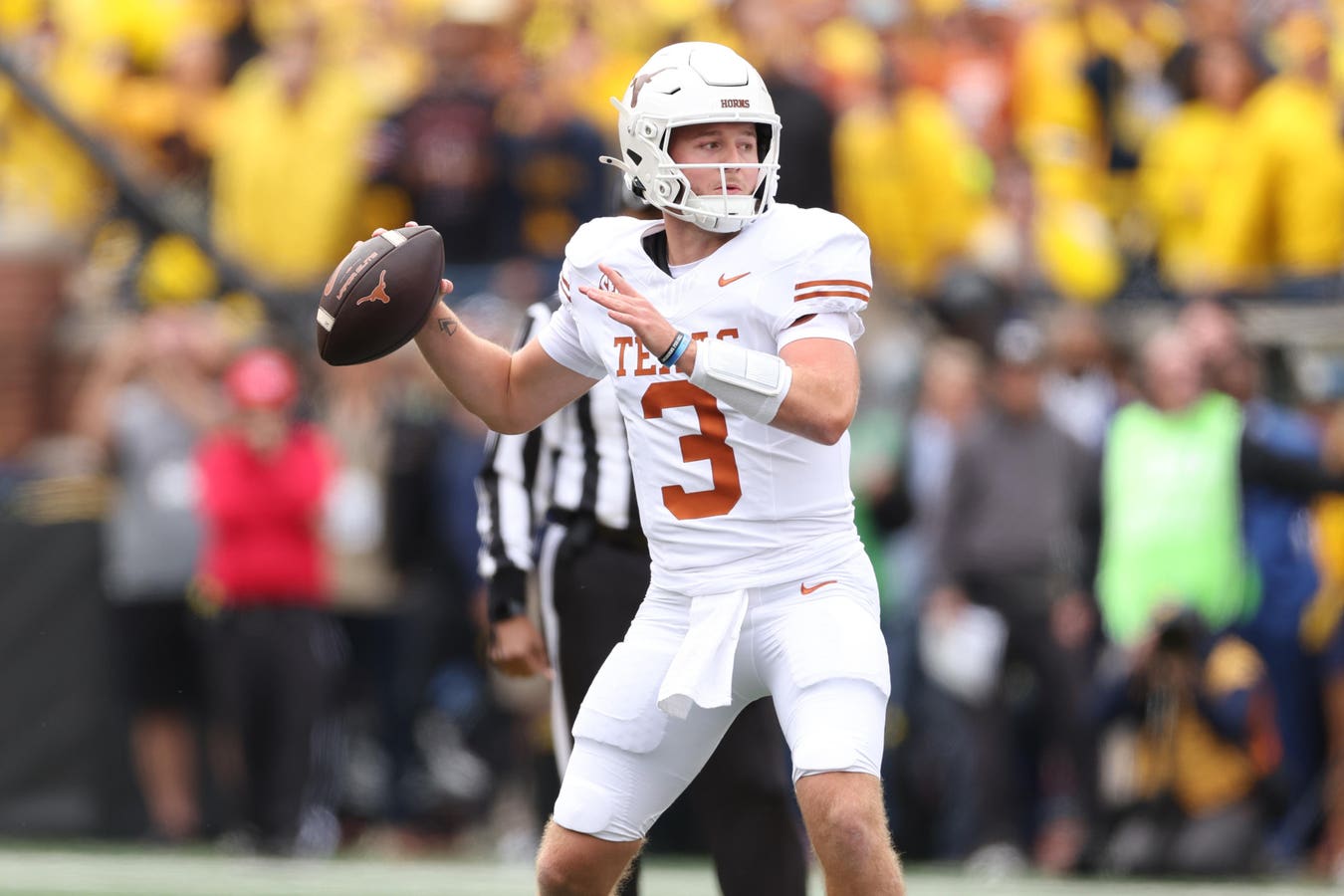NCAA Football
The Underwhelming Impact Of Helmet Communication On College Offense

Source
forbes.com
The NCAA introduced optional helmet communication technology for the 2024-2025 season. Seen in part as a response to last season’s sign stealing scandal, the new rule allows a coach to communicate directly to a player on the field. Initial reactions to the rule were varied. The Associated Press reported that Matt Rhule, head coach at Nebraska, called the rule “seismic” while Joey McGuire, head coach at Texas Tech, called the rule “horrible”. While the new helmet communications may affect the logistics of the game and the confidence of a coach, the early returns show virtually no change in offensive production compared to last season.
Prior to this season, coaches often communicated play calls to no-huddle offenses using a complex system of hand signals and signs. These were quick and effective ways to call plays without relying on wrist cards. However, hand signals and signs are vulnerable to interception by opposing teams. Sign stealing has always been legal under the NCAA bylaws, but with restrictions. One of those restrictions is a ban on same-season in-person scouting of opponents. Last season, ESPN reported that infamous Michigan analyst and “sign stealer” Conor Stalions resigned amid an NCAA investigation alleging he violated this rule. As a result, the Big Ten conference sanctioned Michigan by suspending then head coach Jim Harbaugh for multiple games. The new helmet communication rule is widely seen as a response to this scandal involving last season’s National Champions.
This season, the NCAA officially approved the optional use of helmet communication from coaches to players in Division I FBS football. While the technology has been used in the NFL for decades, this marks its first appearance at the collegiate level. According to the NCAA, the rule states that teams will “have the option to use coach-to-player communications through the helmet to one player on the field.” The communication allows coaches to communicate to players from the moment the play clock starts to the moment the play clock hits 15 seconds or the ball is snapped. The technology is optional, and it is not clear how widespread adoption is in the first year.
While helmet communication is available on both sides of the ball, many coaches laud its benefits for the offense. Curt Cignetti, head coach at Indiana, told ESPN that the technology “eliminates the unknown” of misinterpreting hand signals and signs. However, despite the positive anecdotal evidence from coaches about the benefits of communicating directly with their quarterbacks, the data tell a different story.
There is virtually no difference between offensive production per play in the first half of the 2024-2025 season compared to the same time period from the 2023-2024 season. Across the 133 teams in the FBS, yards per play have increased a meager 1.3% compared to this point last season growing from 5.50 in 2023 to 5.57 in 2024. Points per play had a slightly higher increase but are still only up 1.4% from 0.386 in 2023 to 0.392 in 2024. These small increases suggest that the anticipated impact of direct coach-to-player communication on offensive efficiency has been minimal.
A statistical analysis called a paired t-test, used to compare offensive production between this season and last, confirmed that the change is not statistically significant. In practical terms, this indicates that the helmet communication rule has not provided a substantial competitive advantage, at least when it comes to offensive output.
This lack of significant improvement raises questions about the actual benefit of helmet communication in the college game. While coaches have championed the reduction of errors associated with hand signals and signs, the data suggests that these corrections have not translated into improved offensive performance on the field. It is possible that factors such as player execution, defensive strategies, or other game dynamics play a larger role in offensive outcomes than the ability to communicate plays more directly.
While fans and coaches may be disappointed by the underwhelming results, there is one heartwarming realization: perhaps sign stealing never impacted the game as much as we thought. Despite new technologies, college football remains largely unchanged, reminding us that, at its core, the game is still defined by the players on the field, not the innovations or scandals off it.